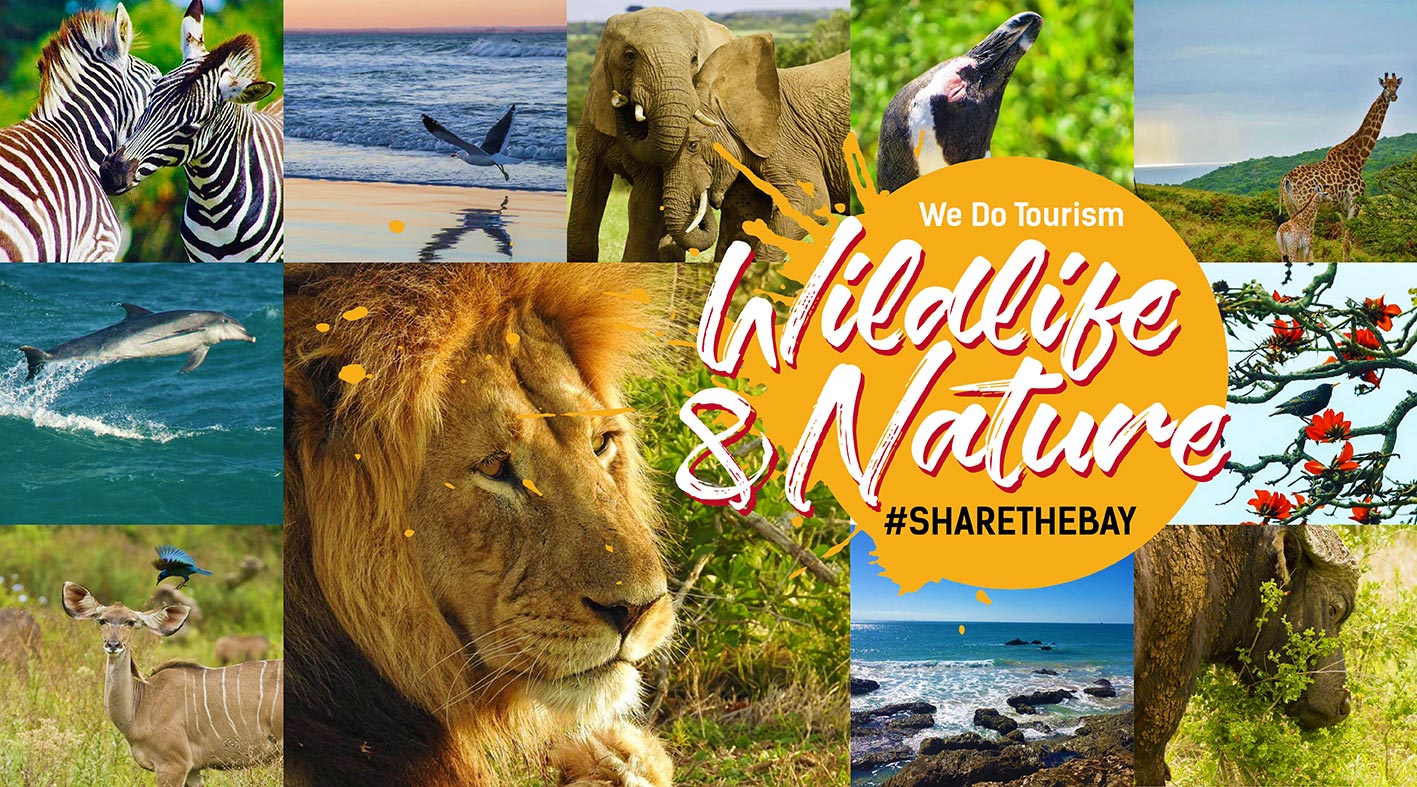Grysbok Reserve and Hiking Trail
Location
Eastern Cape > Gqeberha > Summerstrand
Eastern Cape > Gqeberha > Summerstrand
Add to travel planner
Description

History and Area
The Grysbok Trail was established in 1995 and is designed to act as an environmental education and recreation resource for the University, and the broader community. The hiking trail meanders through the reserve, providing opportunities for observing the exciting fauna, including a variety of mammals, reptiles, amphibians, birds, and flora of the area.
The Nelson Mandela University campus was declared a Private Nature Reserve in 1983. The campus covers 830 ha, and is dominated by the highly threatened St Francis Dune Thicket vegetation community, which is characterised by clumps of thicket occurring within a matrix of Dune Fynbos.
Located on an old marine platform that was cut by wave action around 15 million years ago, the reserve is characterized by three rock types, the oldest of which is a hard grey-white quartzite. Calcrete, old beachrock, and dune sand layers overlay the quartzite. The dunefield is about 6 000 years old, and forms part of a headland bypass dunefield, which once replenished Algoa Bay beaches with sand by overland wind transport. Following the artificial stabilisation of the dunefield in 1870, the headland bypass system was fixed by plant growth and is now largely inactive.
Mammals
The trail is named after the grysbok (Raphicerus melanotis), an endemic fynbos antelope species commonly seen along the trail. Other frequent large mammal sightings include springbok (Antidorcas marsupialis), Plains zebra (Equus quagga burchellii), red hartebeest (Alcephalus buselaphus) and common duiker (Sylvicarpa grimmia). Many smaller mammals, such as the honey badger (Mellivora capensis), scrub hare (Lepus saxatilis), rooikat (Caracal caracal) and three mongoose species, also occur in the Reserve. A total of 24 mammals species have been recorded in the Reserve.
Reptiles and Amphibians
A number of reptiles and amphibians occur in the Reserve. Clicking stream frogs (Strongylopus grayii) and painted reed frogs (Hyperolius marmoratus) call in large numbers at water bodies in the late afternoon and early evening. Tortoises are often seen in the summer months – the angulate tortoise (Chersina angulata) is abundant. Few venomous snakes occur, but one of them, the puff adder (Bitis arietans), is common. The spotted gecko (Pachydactylus maculatus) is also widespread, sheltering in old giant land-snail shells.
Birds
A total of 128 bird species have been sighted in the Reserve, of which many can be seen at the birdhide that overlooks the pond along the trail. Eighteen of these species have been recorded breeding in the Reserve. A complete bird list can be viewed at the birdhide, and we would appreciate additional sightings that you may make.
Plant and animals
Top Fauna:
- Cape Grysbok
- Red Hartebeest
- Plain’s Zebra
- Caracal
- Grey’s Stream Frog
- Jackal & Common Buzzard
Top Flora:
- Garlic Buchu
- White Milkwood
- Dwarf Cape Beech
- Poison Bulb
- Endangered Pig’s Ear
The Grysbok Trail was established in 1995 and is designed to act as an environmental education and recreation resource for the University, and the broader community. The hiking trail meanders through the reserve, providing opportunities for observing the exciting fauna, including a variety of mammals, reptiles, amphibians, birds, and flora of the area.
The Nelson Mandela University campus was declared a Private Nature Reserve in 1983. The campus covers 830 ha, and is dominated by the highly threatened St Francis Dune Thicket vegetation community, which is characterised by clumps of thicket occurring within a matrix of Dune Fynbos.
Located on an old marine platform that was cut by wave action around 15 million years ago, the reserve is characterized by three rock types, the oldest of which is a hard grey-white quartzite. Calcrete, old beachrock, and dune sand layers overlay the quartzite. The dunefield is about 6 000 years old, and forms part of a headland bypass dunefield, which once replenished Algoa Bay beaches with sand by overland wind transport. Following the artificial stabilisation of the dunefield in 1870, the headland bypass system was fixed by plant growth and is now largely inactive.
Mammals
The trail is named after the grysbok (Raphicerus melanotis), an endemic fynbos antelope species commonly seen along the trail. Other frequent large mammal sightings include springbok (Antidorcas marsupialis), Plains zebra (Equus quagga burchellii), red hartebeest (Alcephalus buselaphus) and common duiker (Sylvicarpa grimmia). Many smaller mammals, such as the honey badger (Mellivora capensis), scrub hare (Lepus saxatilis), rooikat (Caracal caracal) and three mongoose species, also occur in the Reserve. A total of 24 mammals species have been recorded in the Reserve.
Reptiles and Amphibians
A number of reptiles and amphibians occur in the Reserve. Clicking stream frogs (Strongylopus grayii) and painted reed frogs (Hyperolius marmoratus) call in large numbers at water bodies in the late afternoon and early evening. Tortoises are often seen in the summer months – the angulate tortoise (Chersina angulata) is abundant. Few venomous snakes occur, but one of them, the puff adder (Bitis arietans), is common. The spotted gecko (Pachydactylus maculatus) is also widespread, sheltering in old giant land-snail shells.
Birds
A total of 128 bird species have been sighted in the Reserve, of which many can be seen at the birdhide that overlooks the pond along the trail. Eighteen of these species have been recorded breeding in the Reserve. A complete bird list can be viewed at the birdhide, and we would appreciate additional sightings that you may make.
Plant and animals
Top Fauna:
- Cape Grysbok
- Red Hartebeest
- Plain’s Zebra
- Caracal
- Grey’s Stream Frog
- Jackal & Common Buzzard
Top Flora:
- Garlic Buchu
- White Milkwood
- Dwarf Cape Beech
- Poison Bulb
- Endangered Pig’s Ear
TRAIL TYPE: CIRCULAR
DURATION: 1 TO 2 HOURS
DIFFICULTY: EASY
RECOMMENDED HIKING TIMES: 08h00 – 16h30
Embark on a truly unique wildlife adventure with the Grysbok Trail. Immerse yourself in the delightful aroma of the diverse fynbos vegetation while encountering an array of African mammals, such as the striking Plains Zebra, the elegant Red Hartebeest, and the adorable endemic Grysbok in the Reserve.
Download the Grysbok Trail Guide Here: https://www.nmbt.co.za/uploads/1/files/doc_grysbok_trail_guide_map.pdf
Important Information
Please remember that this is a Nature Reserve:
- All plant and animal life is protected and must not be disturbed or harmed. Please keep on the roads and paths at all times. Mountain bikes allowed.
- Please do not smoke or light fires while on the trail.
- Do not litter.
- Please take your litter with you.
- Carry at least two litres of drinking water per person. No toilets or water points available.
- For safety purposes, you must sign the Visitors’ Book at the fence stile at the start of the trail.
- Trained guides are available to lead visitors on the trail but must be booked in advance.
- No dogs are allowed.
- For guided trail bookings, please contact: Centre for African Conservation Ecology (ACE): at +27 (0) 41 504 2316.
- For emergencies on the trail and general enquiries, please contact the NMU Protection Services on +27 (0) 41 504 2482 or the Ranger, Craig Breedt on +27 (0) 82 536 8192 or Elana Storm on +27 (0) 83 446 8564.
DURATION: 1 TO 2 HOURS
DIFFICULTY: EASY
RECOMMENDED HIKING TIMES: 08h00 – 16h30
Embark on a truly unique wildlife adventure with the Grysbok Trail. Immerse yourself in the delightful aroma of the diverse fynbos vegetation while encountering an array of African mammals, such as the striking Plains Zebra, the elegant Red Hartebeest, and the adorable endemic Grysbok in the Reserve.
Download the Grysbok Trail Guide Here: https://www.nmbt.co.za/uploads/1/files/doc_grysbok_trail_guide_map.pdf
Important Information
Please remember that this is a Nature Reserve:
- All plant and animal life is protected and must not be disturbed or harmed. Please keep on the roads and paths at all times. Mountain bikes allowed.
- Please do not smoke or light fires while on the trail.
- Do not litter.
- Please take your litter with you.
- Carry at least two litres of drinking water per person. No toilets or water points available.
- For safety purposes, you must sign the Visitors’ Book at the fence stile at the start of the trail.
- Trained guides are available to lead visitors on the trail but must be booked in advance.
- No dogs are allowed.
- For guided trail bookings, please contact: Centre for African Conservation Ecology (ACE): at +27 (0) 41 504 2316.
- For emergencies on the trail and general enquiries, please contact the NMU Protection Services on +27 (0) 41 504 2482 or the Ranger, Craig Breedt on +27 (0) 82 536 8192 or Elana Storm on +27 (0) 83 446 8564.
MAP
Latitude : -34° 0' 33.74" S | Longitude : 25° 39' 23.87" E
Image Gallery
Experience
Things to See and Do
Adventure & Sports
Green Flag Trails
Hiking
Hiking Trails
App Guides
Walk or Pedal
Wildlife & Nature
Green Flag Trails
Nature Reserve



















 Please wait!
Please wait!